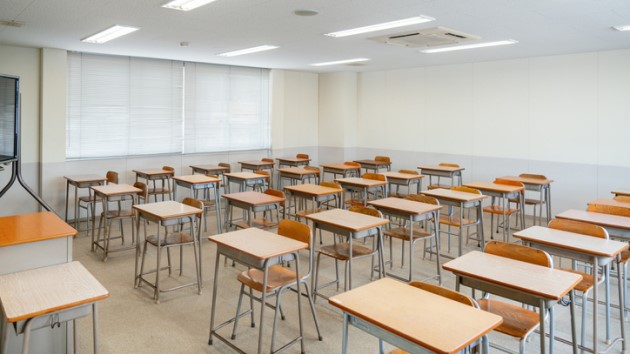(NEW YORK) — The emergence of Google’s Chromebook as a centerpiece of classroom education nationwide is exemplified by the excuses students have offered for incomplete work, technology repair shop owner Justin Millman said.
“The new version of ‘my dog ate my homework’ is ‘my Chromebook won’t turn on,"” Millman, who says his Westbury, New York-based shop Cell Mechanic serves roughly 150 schools and repairs 5,000 Chromebooks per month, told ABC News.
The durability of Chromebooks is an issue hardly limited to student concoctions, though. The outbreak of the COVID-19 pandemic prompted the wide adoption of Chromebooks in schools across the U.S., since the relative affordability and effectiveness of the products eased the shift toward digital learning.
While many classrooms have come to depend on Chromebooks, the products have shown a tendency to malfunction or fail within a handful of years for reasons unrelated to user treatment, critics told ABC News. On top of that, the Chromebooks are difficult to repair, generating harmful waste, imposing significant replacement costs and disrupting student learning, they added.
“If schools don’t have excess Chromebooks that they can hand to someone,” Millman began, “then those kids effectively can’t learn the same way the rest of the classroom can.”
In an interview with ABC News, Forrest Smith, a product manager who works on Google’s ChromeOS team, said Chromebooks offer schools an unparalleled low-cost combination of user-friendliness, speed and security.
Chromebooks require security updates every four weeks, he added, but over time some of the components become incapable of such updates, rendering the product unusable.
“It always starts with speed, simplicity and security for us,” Smith said. “When all of those components inside the device can’t all be updated, we reach a point where that value proposition just can’t be maintained.”
As many school districts shifted to remote learning during the COVID-19 pandemic, the nation’s elementary and secondary education systems underwent wide adoption of the one-to-one learning model, in which each student receives an assigned technological device, Stacey Weinberg, the director of technology and innovation for the East Williston School District in Long Island, New York, told ABC News.
By March 2021, 90% of educators said there was at least one device for every middle and high schooler; 84% of educators said the same for elementary schoolers, a survey from the EdWeek Research Center found.
“The Chromebook was a perfect solution,” Weinberg said, noting the product’s relative affordability and capacity for internet use.
Over time, however, Weinberg noticed that the products lacked durability, for instance, the inability to receive security updates, she said.
“We’ve definitely run into devices that are no longer taking critical security updates, which poses a deep concern,” Weinberg said.
The U.S. generates 6.9 million tons of electronic waste each year, according to a report by the nonprofit United States Public Interest Research Group, or U.S. PIRG, in April.
“The environmental impact is pretty severe,” Lucas Gutterman, the author of a separate report on the issue released by PIRG in April, told ABC News. “The reality is that at the rate that we are consuming technology, we cannot recycle our way out of the problem.”
Smith, of Google, said the company is committed to environmental sustainability.
“There are large teams of people who are doing everything they can in how we consume energy and how we manage waste; and also in how we produce our own products to make things more sustainable and drive progress,” Smith said.
The need to replace Chromebooks also brings significant costs, Gutterman said. Doubling the life of Chromebooks could save U.S. schools $1.8 billion, assuming no additional maintenance costs, the U.S. PIRG report said. The calculation of total cost savings uses the current price of Chromebooks to determine school expenses under a scenario in which the products last twice as long, the report says.
Google did not immediately respond to a request for comment about the U.S. PIRG report.
In May, Google spokesperson Peter Du told The Verge in a statement: “We’ve worked diligently with our hardware partners to increase the years of guaranteed support Chromebooks receive, and since 2020, we now provide eight years of automatic updates, up from five years in 2016.”
“We also are always working with our device manufacturing partners to increasingly build devices across segments with post-consumer recycled and certified materials that are more repairable, and over time use manufacturing processes that reduce emissions,” the statement added.
In June, U.S. PIRG sent a letter to John Solomon, the vice president and general manager of ChromeOS at Google, urging the company to extend the life of 13 Chromebook models.
Google responded to the letter but has not committed to making changes, Gutterman said. Google did not immediately respond to a request for comment about its response to the letter.
“We’re still talking to them,” Gutterman added. “Google really is in this unique position because they are providing laptops to millions of students across our country.”
Copyright © 2023, ABC Audio. All rights reserved.












